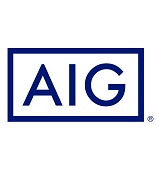Inflation is Impacting your Property Insurance
September 20, 2022
Inflation is a word that has quickly entered our daily conversations. It’s on everyone’s minds. Everything is going up in price – food, petrol and diesel, labour and more. But how does this impact on insurance?
With certain types of insurance, such as motor insurance and property insurance, inflation directly affects the prices of the components required to ‘fix’ the insured vehicle or property, following a crash or damage scenario. However, whilst inflation has an impact on vehicle repair costs, later reflected in premiums, it is particularly problematic within property claims.
Property insurance relies on the insured correctly assessing their ‘sum insured’ – the property’s value (rebuild cost, not its market value). The components influencing this have all soared in cost. Raw materials have rocketed in price, due to global supply issues, shortages caused by Covid-19, shipping problems, and even lockdown DIY mania.
Brexit has reduced the number of workers in the construction and transport sectors, pushing up labour costs, now also influenced by the minimum wage increase of April 2022. Labourers are now less willing to work longer hours, further squeezing the labour supply chain. 1
The cost of some property repairs is also influenced by the requirement to incorporate more expensive ‘green’ materials and solutions, to help meet environmental targets.
Many homeowners unfortunately set their property’s sum insured when first taking out home insurance, but then never review it, simply allowing their policy to roll over. In times of low inflation, that may not be such an issue, but when inflation is soaring, so too are property rebuild costs.
Although this may, at face value, only appear to be an issue if a property suffered a total loss, perhaps due to a fire or explosion, that is not so. Being ‘underinsured’, by setting too low a sum insured, affects anyone who is insuring a home or commercial property.
Insurers can view underinsurance in two ways – as either a fraudulent attempt to reduce premiums, or as a genuine mistake. Either way, the insured loses out significantly. An insurer can either void the policy completely, if they find the property underinsured, or will apply ‘average’ to the claim. Here, they look at the percentage of underinsurance and use it to calculate a much-reduced pay out.
For instance, if a property has a rebuild cost of £600,000, but is only insured for £500,000, it is only insured for 83.3% of its value. If you suffered damage amounting to £50,000, and the insurer agrees to pay anything, you would most likely only receive a payment of £41,650 (83.3%), less the policy excess.
When calculating your sum insured, it is not just the property’s market value you need to consider but all the other costs – architects and surveyors’ fees, potential site clearance costs, building materials, labour, planning charges and more. Commissioning a Royal Institution of Chartered Surveyors’ (RICS) valuation can assist with your setting of the sum insured, but do remember to then add VAT. Getting the sums wrong could be disastrous.
If you get in touch, we will be happy to guide you through how your sum insured should work, for both your property’s fabric and rebuild, and the contents you own. We also offer a low-cost rebuild cost assessment where you will receive a comprehensive report, guiding you on how much you shoud insure your buildings for.
Sources:
1 AXA: Guide to Property Claims Inflation











